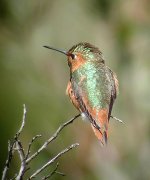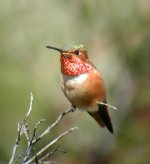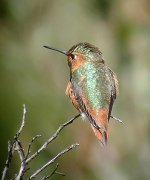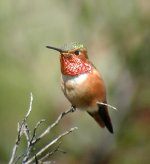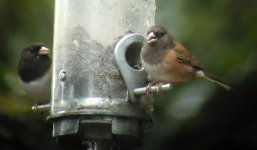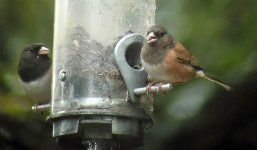Jeff Chase
Member
I'm still working on this prob myself, but thought that maybe some of you more experienced digiscopers might be able to help. I'll be as brief as possible. I'm using a Pentax 65ED scope with a 20-60X eyepiece, Coolpix 990 camera and a homemade adapter that allows the camera lens to be set right up against the eyepiece of the scope. The camera takes sharp pics by itself and the scope is very sharp by itself, but I keep getting fuzzy photos when I combine them...and ALL photos seem to have about the same fuzziness. I've attached a couple of pics so you can see. I use a Manfrotto tripod and a 16" manual shutter release. These photos were taken on a near windless day. I focused the scope on the branch, slipped the camera into position, used the macro (flower) setting on yellow, Spot AF area focusing, pushed the release half way down to prefocus the camera on the branch, and snapped the pic when all was ready. Image quality was set to "fine". The photos were taken at f3.2 and 1/225 sec.(aperture priority, manual), ISO 100. I used Photoshop Elements to crop, change lighting levels, and used unsharpen mask (150, 1.5 and 2). Still the fuzziness! Any ideas? Yes, I know the exposure is not good, I'll underexpose a bit next time. Also, the scope was on 20X and the camera about midway between wide-angle and telephoto.
Attachments
Last edited:




